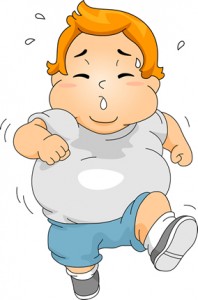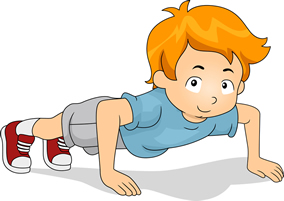By George Stavrou
 In a report titled ‘Urban sprawl and its relationship with active transportation, physical activity and obesity in Canadian youth’ by Laura Seliske, William Pickett and Ian Janssen, the researchers stated that ‘Over the past 30 years, the prevalence of overweight and obesity has nearly tripled among Canadian youth aged 12 to 17, thereby potentially increasing the physical, mental and social problems associated with obesity in young people. Furthermore, obesity tends to persist, with 60% to 90% of obese adolescents remaining obese into adulthood.’ (1)
In a report titled ‘Urban sprawl and its relationship with active transportation, physical activity and obesity in Canadian youth’ by Laura Seliske, William Pickett and Ian Janssen, the researchers stated that ‘Over the past 30 years, the prevalence of overweight and obesity has nearly tripled among Canadian youth aged 12 to 17, thereby potentially increasing the physical, mental and social problems associated with obesity in young people. Furthermore, obesity tends to persist, with 60% to 90% of obese adolescents remaining obese into adulthood.’ (1)
Additionally, ‘in 1978, only 15% of children were overweight or obese. By 2007, Statistics Canada found that 29% of adolescents had unhealthy weights. Most adolescents do not outgrow this problem and in fact, many continue to gain excess weight. If current trends continue, by 2040, up to 70% of adults aged 40 years will be either overweight or obese.’ (2)
Why is Obesity such a concern?
Obesity is linked to a number of health problems:
Physical health:
• Type-2 diabetes
• Bone and Joint Problems
• High Blood Pressure, Hypertension or Heart Disease
• Sleep Apnea and other breathing problems
Emotional Health
• Depression
• Low self-esteem and negative body image (3)
‘Adults who have unhealthy weights are at increased risk of heart disease, cancer, strokes and type 2 diabetes. In 2005, the total cost of obesity to Canadians was $4.3 billion; $1.8 billion in indirect healthcare costs, and $2.5 billion in indirect costs. Affected adults may die up to 3 to 7 years earlier than counterparts with a healthy weight.’ (4)
 Children are NOT getting enough physical activity!
Children are NOT getting enough physical activity!
It’s recommended that children (ages 5 to 11) and youth (ages 12 to 17) get at least 60 minutes of activity a day. Unfortunately, they are getting nowhere near this amount!
‘The latest evidence from the Canadian Health Measures Survey indicates that only 7% of Canadian kids are meeting the 60 minutes-per-day goal. Childhood obesity rates have increased from 15% to 26% from 1980 to 2004, with rates in the 12-to-17 age group more than doubling—from 14% to 29%. Rates are as high as 41% in Aboriginal youth.’ (5)
Harvey Skinner, Dean of the Faculty of Health at York U, at a keynote address in Sept 2012 ‘First Health, Then Medicine.’ presented valuable insight on the current challenges faced by our health care system. Dean Skinner stated that in Canada, 5% of Health Care Funding is spent on the preventative side while 95% is spent on the treatment side (6)
The Cost of Physical Inactivity
Increased physical activity levels can save health-care dollars.
$2.1 billion, or about 2.5% of the total direct health-care costs, can be attributed to physical inactivity. This figure mirrors results reported for the United States (Katzmarzyk, Gledhill, Shepard, CMAJ 2000 November 28;163(11): 1435-1440)
Conservative estimates suggest that reducing the prevalence of physical inactivity by 10% would save $150 million annually.
What can we do about this?
Physical activity is not only sports – everyday activities are also part of the equation!
Below are some suggestions on how to encourage children and youth to be more active:
• Be a good role model by being active yourself
• Make it a family affair by engaging in activities such as skating, walking, hiking, cycling.
• Limit the amount of time they spend surfing the internet, playing video games or watching tv
• Educate them on the importance of daily physical activity being a critical part of staying healthy.
• Encourage them to walk or ride their bikes to school.
• Applaud them in choosing to be more physically active – self-confidence is a vital part of their success! (8)
References:
(1) http://www.statcan.gc.ca/pub/82-003-x/2012002/article/11678-eng.htm
(2) http://www.childhoodobesityfoundation.ca/statistics
(3) http://www.healthycanadians.gc.ca/kids-enfants/obesity-obesite/risks-risques-eng.php
(4) http://www.childhoodobesityfoundation.ca/statistics
(5) http://www.bcmj.org/council-health-promotion/promoting-physical-activity-0
(6) http://www.yorku.ca/yorkcirc/lectures/pastevents-2012.htm
(7) http://www.activeliving.ca/english/index.cfm?fa=WhatWeDo.Background
(8) http://www.healthycanadians.gc.ca/kids-enfants/physical-physique/tips-conseils-eng.php
-George Stavrou, B.A. Psyc., is a certified Personal Trainer, Lifestyle & Weight Management Consultant, and Holistic Health and Wellness Coach. George is the author of the “The Stavrou Method: A 12 Week Day By Day Guide To Health, Wellness And Fat Loss For ALL Levels”, which is NOW available at www.thestavroumethod.com
Charitable Efforts!
I have chosen the following four organizations as recipients of our efforts:
– YMCA (Greater Toronto Area)
– The Scarborough Hospital Foundation
– York University (Faculty of Health)
– Centennial College (the School of Community and Health Studies and the School of Communications, Media and Design)
My goal for 2013 is to raise $100K from the profits of ‘The Stavrou Method’ (The Package) to be split equally between the above organizations.
For more information on how you can be a part of our charitable efforts, please contact me directly at [email protected] with ‘Charitable Efforts’ in the subject line!
